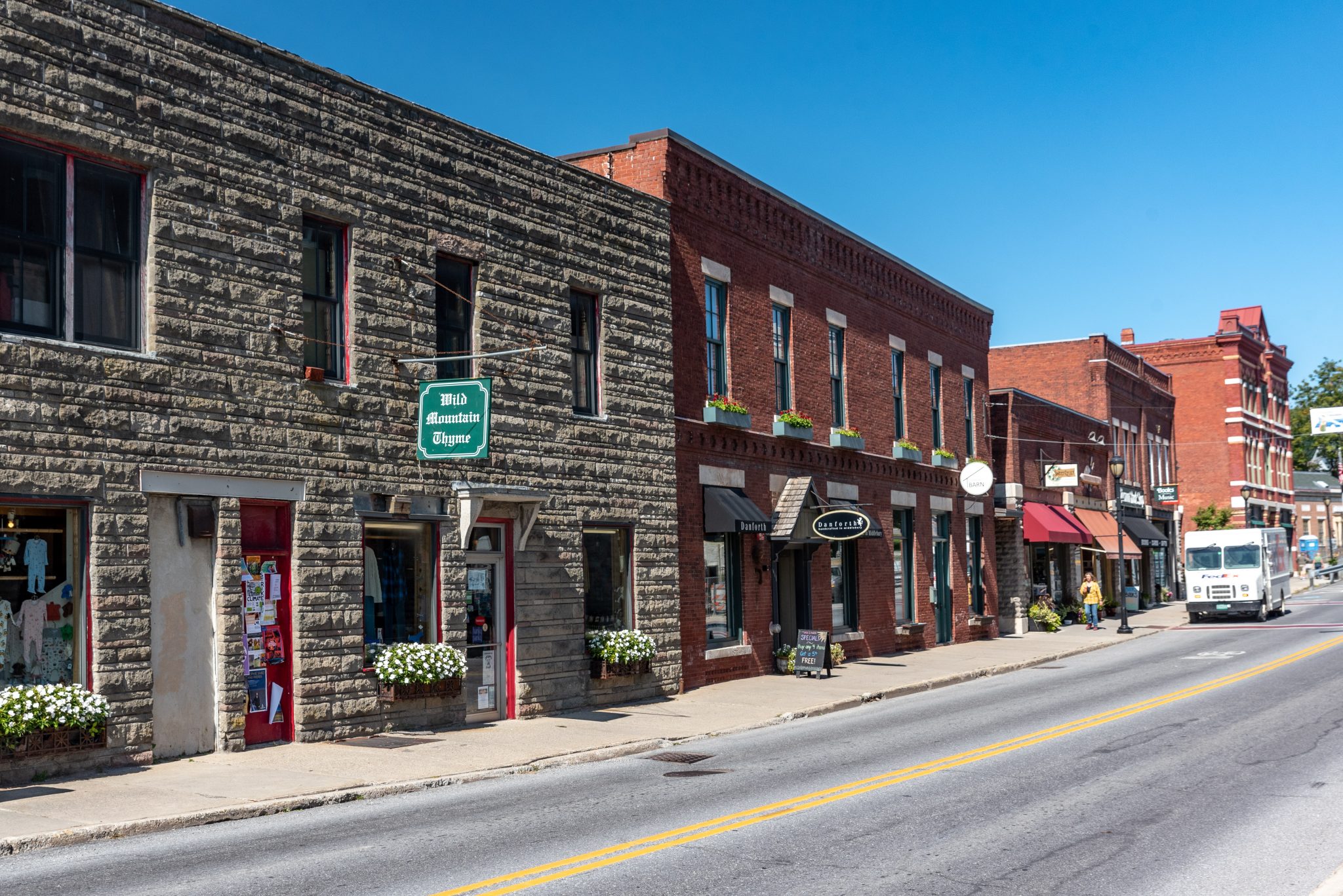This commentary is by Kate McCarthy, Sustainable Communities Program Director at VNRC. It also appeared in VTDigger, the Brattleboro Reformer, the Rutland Herald, and the Bennington Banner.

It matters how and where we grow our communities in Vermont. Promoting development in historic community centers builds on decades of downtown investment and helps sustain our unique places, while reducing sprawl and taking development pressure off our farmland, forests, and natural areas.
Despite the many housing, transportation, and affordability benefits that have come from our smart growth approach over the last thirty years, it is not enough. We are falling short in Vermont, and in the process we’re losing things we care about. We are seeing the hollowing out of our downtowns and rural villages, the heart and soul of our small towns – places where we can connect with one another and support local businesses. We’ve also seen the steady chopping up and development of our working lands, the farm and forestland that give us both an important economic engine and a renowned landscape.
Two tools to address these issues can be found in a bill, H.926, that modernizes Act 250, Vermont’s 50-year-old development review law. The proposed changes aim to promote development and vitality in our community centers and better protect the integrity of our forests.
The first tool promotes housing and smart growth by exempting projects in state-designated Downtowns and Neighborhood Development Areas (NDAs) from Act 250. These designation programs, which did not exist when Act 250 was enacted, comprise 23 downtowns and six NDAs, and represent a limited amount of the state’s land area. A key argument for these downtown and neighborhood development areas to be exempted from Act 250 is that they are already developed. We want to encourage revitalizing infill that puts buildings on empty lots and brings upper stories of buildings back to productive use.
To receive these designations, the Downtown Development Board has a vetting process that ensures these areas are suitable for redevelopment. It requires that downtowns have zoning bylaws and a municipal capital budget and program, as well as sewer and water systems that meet all state and federal standards and have the capacity to accommodate future growth. The boundaries of NDAs are intended to avoid important natural resources, like primary agricultural soils and wetlands.
To assure the integrity of these designations, H.926 allows the designation decisions of the Downtown Board to be appealed, much like any other decision that affects permitting of projects. This safeguard does not currently exist.
Furthermore, despite the common misconception that it does everything, Act 250 is not a substitute for other required permits. Local zoning permits are still required, as are all applicable state permits, including those for stormwater and wastewater.
There have been concerns that the designated area exemption from Act 250 will lead to increased flooding, harmful discharges to Vermont’s waters, and the elimination of the review of sewer and water line extensions, which can lead to sprawl. These concerns are unfounded.
River corridor protection requirements in settled areas already help address flooding. Furthermore, infill development on already-paved sites in downtowns – which is largely what the exemption would enable – does not worsen flooding, because it does not create new impervious surfaces. (A recently approved project in downtown Montpelier on a 100% impervious site actually improves the stormwater management and reduces the amount of impervious surface with landscaping.) Today, Act 250 does not manage connections to existing sewer systems where wastewater capacity exists – that is a state or local function. Furthermore, extensions of sewer lines outside of designated areas will still go through Act 250 review.
The second tool in H.926 will help protect the integrity of our forests and wildlife by adding a review standard that looks at whether a project will have an undue adverse impact on forests and wildlife connectivity. This does not prevent building in these areas but calls for development to avoid or minimize its impact on the resource, with mitigation as a last resort. It also brings under review projects with combined roads and driveways of over 2,000 feet (close to .4 mile). The hope here is to manage the scattered, incremental residential subdivisions of land that are negatively impacting wildlife habitat, forest health, water quality, and access to working lands and outdoor recreation.
This balanced approach to updating Act 250 is supported by Vermonters. In the 2019 Vermonter Poll, a statistically representative poll conducted by UVM’s Center for Rural Studies, 73.4% of people who replied to the question agreed that Act 250 should be “strengthened to discourage poorly planned development in outlying areas, including farmland, forestland, and natural areas, and encourage development in existing compact centers, downtowns, and villages.”
As the most consistent defender and protector of Act 250 for the last 50 years, the Vermont Natural Resources Council (VNRC) does not take exemptions to the law lightly. However, taken together, we feel that these policies provide a balanced approach to encouraging more development where we want it—in compact, smart growth locations like downtowns – while assuring that development in outlying areas will protect our farm and forestlands.
Many of us have long-held opinions and beliefs about Act 250, but if we want to achieve a future different from our present, it’s appropriate to reexamine those views so long as the outcomes keep our environment and communities strong. VNRC believes that even though H.926 may challenge some of the ways we have thought about Act 250 in the past, it presents a fair and balanced approach that ultimately contributes to the future we want to see for Vermont.




